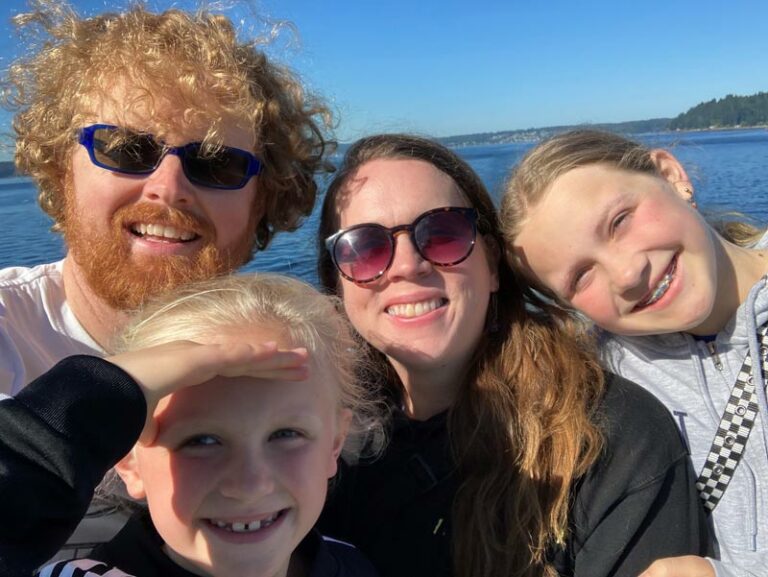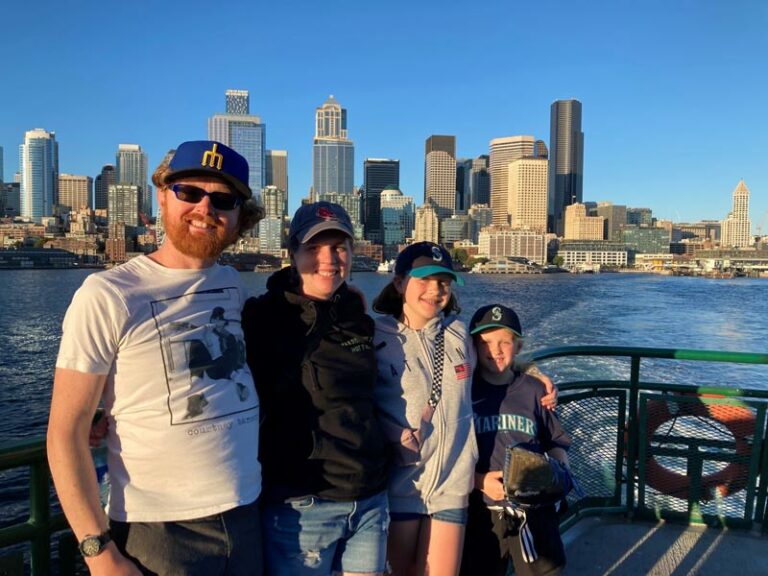#MyPTStory
Jason, a dedicated father and volunteer softball coach, found himself sidelined by nagging shoulder pain. Determined to regain his mobility and return to coaching his daughter’s team, he turned to physical therapy for answers. Through targeted treatments and personalized care, Jason discovered the transformative power of PT on his path to wellness.
Throwing batting practice for young, aspiring softball players is an exciting part of the volunteer coach role. After all, watching the girls advance in their hitting skills as the season goes on can be extremely rewarding. The pitch itself can be somewhat tricky to master, however, and, as Jason Quigley learned, can lead to shoulder issues over time, especially when throwing throughout long practice sessions and without training or experience.
It was a few practices into the season when Jason, who was helping coach his daughter’s team, started noticing his shoulder was sore.
“I was doing the whole wind-up, which I’ve never been coached on how to actually do properly,” Jason reflected. “My shoulder was bugging me a little bit, and then one morning I tried to do some of my morning exercise routine – some pushups and stretches – and it just popped. It was pretty painful after that.”
Despite the nagging pain in his shoulder, Jason opted to give it time, figuring, he said, that was all it needed. As an active, healthy 43-year-old, Jason was used to minor injuries clearing up on their own. But as the weeks passed, nothing changed. Still, Jason waited. Weeks turned into months and rather than experiencing improvements in his pain levels, Jason found himself struggling with work and simple daily tasks.
“It got to the point where it hurt to change my shirt or wash my hair; everyday activities became really hard to do,” he said.

When his uncle suggested physical therapy, Jason wasn’t sure about the idea, thinking his condition did not warrant going down that road.
“I had always assumed physical therapy was something you did if you had a major injury or surgery and had to learn to walk again or something super dramatic,” Jason explained. “It did not occur to me that it could help with more minor situations.”
Eventually Jason went to an orthopedic doctor, hoping for an answer.
“The orthopedic doctor told me it was probably tendonitis and that I needed to go to physical therapy. So, that was the second time I’d been told that.”
Upon the doctor’s recommendation, Jason scheduled an appointment at Therapeutic Associates Southeast Portland Physical Therapy with Dan Renelt, PT, DPT.
What causes shoulder pain?
Though Jason could recall the moment he heard his shoulder make a popping sound, there was no indication that an injury had occurred at that time.
“Our joints pop, they click, they do things like that all the time, and while there are times when that can correlate to some sort of an injury, that is not typically the case,” Dan explained. “Most often there is not a smoking gun, but more of a gradual issue building up in the background.”
Dan estimates that about 75 percent of the shoulder patients they see at the clinic have underlying factors contributing to their pain. It may be weakness or stiffness which makes the shoulder susceptible to irritation and while in an irritated state, something minor can happen and push the pain over the top of what a person can handle.
Through a thorough evaluation, Dan determined that was likely the case with Jason’s situation.
The shoulder is a complicated joint that can move in more directions than any other joint in the body, yet a lot of different things factor into shoulder mobility.
As Dan explained it, we have what we think of as the shoulder joint (the glenohumeral joint), but then we also have our acromioclavicular joint (AC joint) and our sternoclavicular joint (SC joint) which help keep the shoulder stable and secure while stationary and while in motion. Furthermore, the shoulder blade (scapula) is an important bone when it comes to shoulder function.

Muscles, Dan continued, play a part as well, such as the four rotator cuff muscles and scapular muscles, and even the lower neck and upper back muscles.
“Often, these muscles are not strong, or we are not using them the way we should,” Dan said. “So, there are a lot of areas that can have something going on that contribute to shoulder pain. A lot of times the shoulder is the victim of other areas not doing their job well. As physical therapists, we can sort out where those areas are.”
Physical therapy for shoulder pain
It may have seemed a little strange to Jason when during his first visit to physical therapy for shoulder pain, his PT’s physical exam included much more than the shoulder joint itself.
“Dan did a good job explaining what he was doing and why he was doing it, otherwise I would have wondered why he was pushing around my collarbone and elsewhere when it was my shoulder that hurt,” Jason reflected. “He asked a lot of questions and moved my shoulder all over the place to see what I could do without pain and what caused pain. They wanted to figure out exactly what was happening.”
After an entire summer of dealing with his pain, expecting but never experiencing any relief, Jason said he walked away from his first PT appointment feeling better than he had in months. Equipped with a short list of customized exercises to do at home, Jason said he was motivated by the newfound hope PT had given him. Some of the moves were hard, he admitted, motions he had never done before. It was also challenging to find the time to commit to his home exercise program, with two young kids at home and a lot going on all the time. But Jason knew he had to do his part.
After just four appointments, Jason said he was nearly back to 100 percent.

“It wasn’t painful to do everyday things anymore. I was able to go back to normal life.”
With spring just a month away, Jason looks forward to being back on the field coaching his daughter’s softball team.
“I’m probably not going to be so gung-ho with the pitching this year. I think I’m learning as I get older to listen to my body a little bit better. Sure, it’s hard to accept that you’re not 20-something anymore and you just can’t do the same stuff. But, if I do wind up hurting myself again doing some dumb thing, I’ll be much quicker to go to physical therapy knowing they can help.”

PT Strategies for Success
Discover how targeted physical therapy intervention can lead to significant improvements in pain and dysfunction. Find hope and motivation on your path to recovery and pain-free living. Start your PT journey today at a clinic near you.
